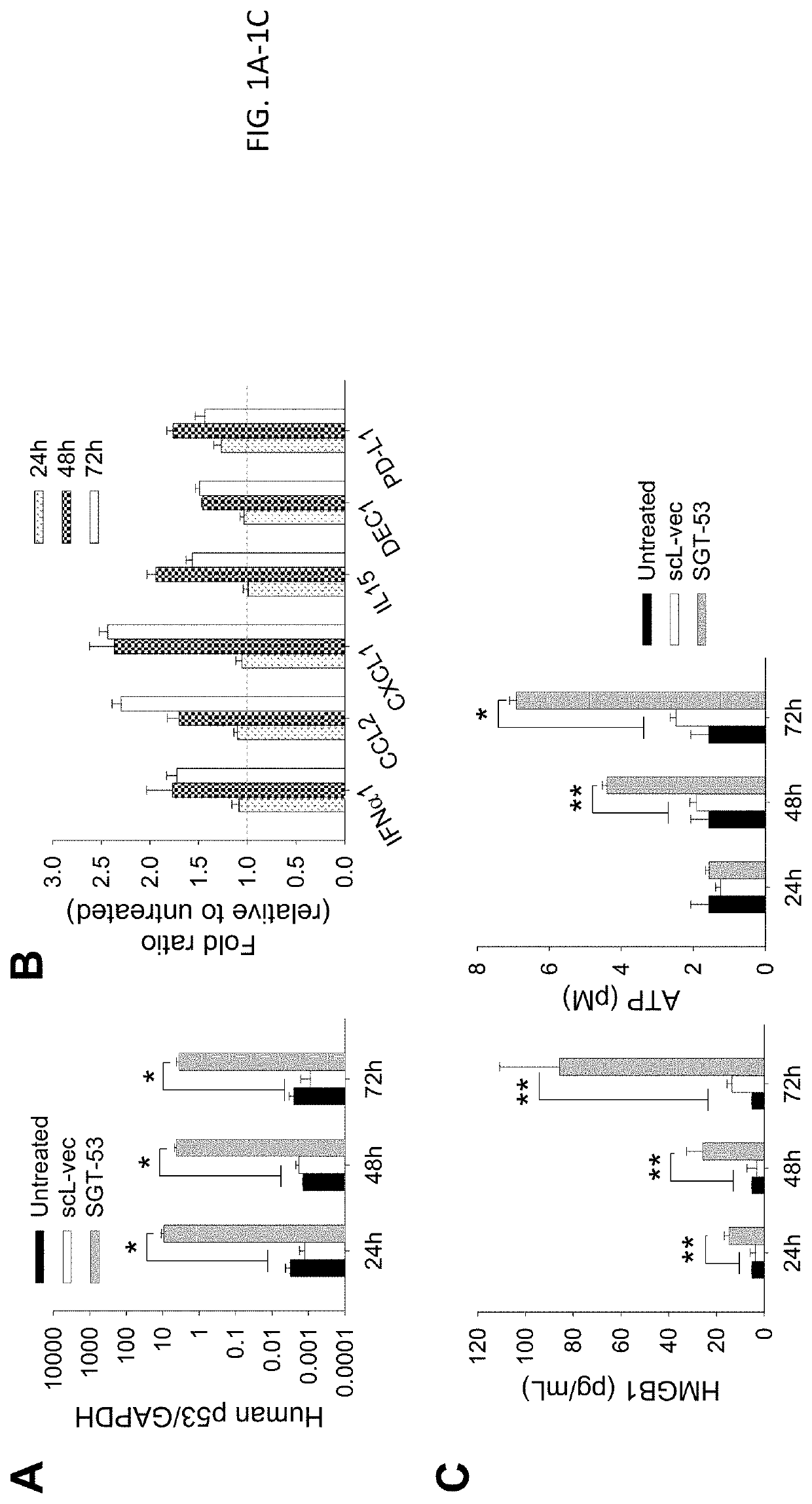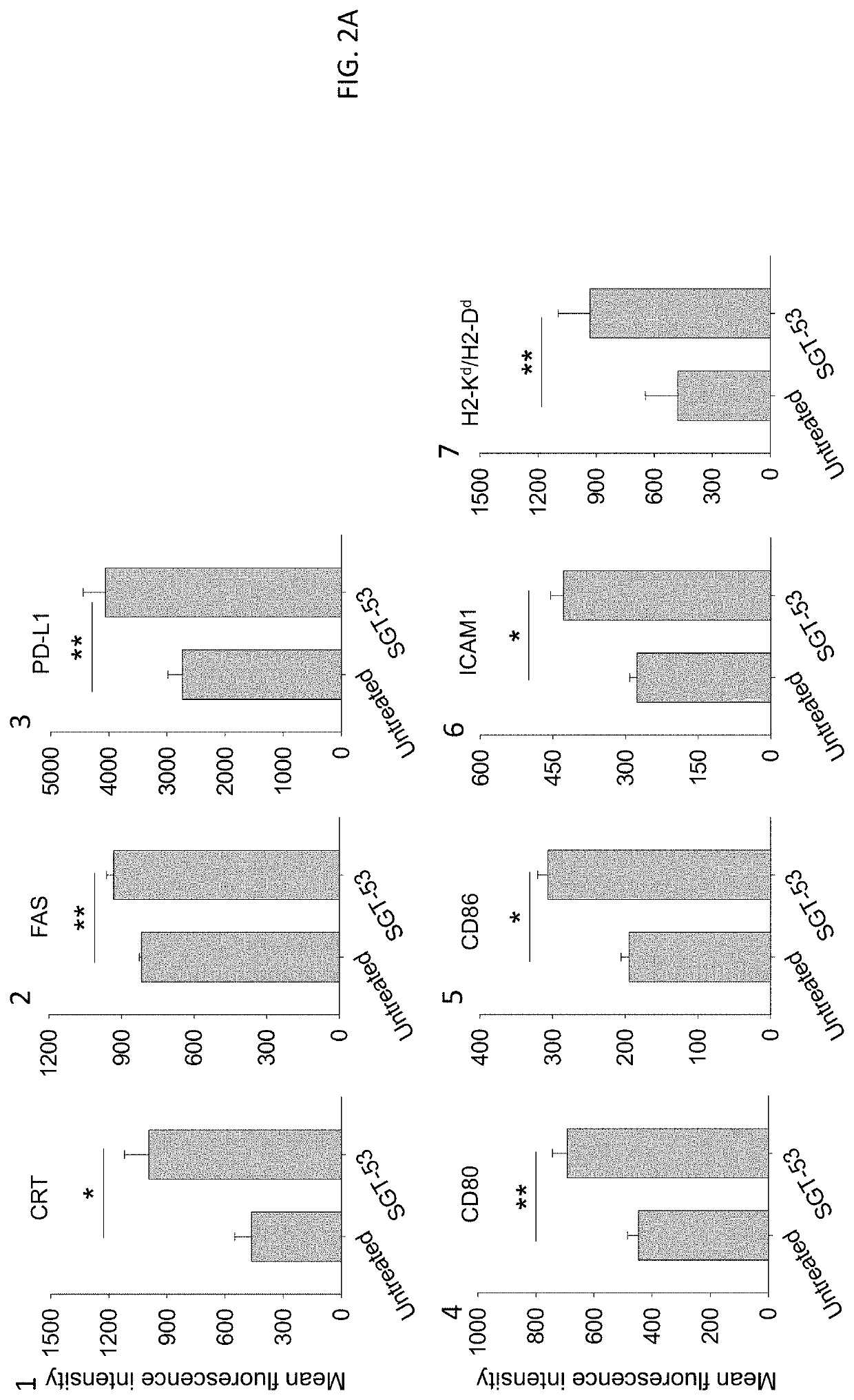Methods for reducing side effects of immunotherapy
- Summary
- Abstract
- Description
- Claims
- Application Information
AI Technical Summary
Benefits of technology
Problems solved by technology
Method used
Image
Examples
example 1
Preparation of Targeted Cationic Liposome DNA Complex
[0126]It has been determined that a simple mixing of the TfRscFv and the cationic liposome (which does not contain any lipid with a reducible group such as Maleimide DOPE or any reducible group), instead of chemical conjugation, results in formation of an immunologically active complex, wherein the ligand is bound directly to the liposome without the use of a linker or chemical-conjugation molecule, that still efficiently binds to and transfects tumor cells (see e.g., U.S. Published Patent Application No. 2003 / 0044407, the disclosure of which, including the compositions and methods disclosed therein, is incorporated by reference herein).
[0127]The TfRscFv-immunoliposome complexes are prepared by mixing the TfRscFv with the cationic liposome composition at defined ratios of single chain protein to liposome and DNA to n moles (or ug) total lipid in the mixed complex in the ranges described throughout. The preparation of the complexes...
example 2
SGT-53 Increases Immunogenicity of 4T1 Cells
[0135]4T1 cells were plated at 6.0×105 cells per 10 cm dish for 24 h before transfection. scL-53 (SGT-53) was prepared as described above in Example 1 and added in SFM to the dishes at a concentration of 7 μg of DNA / dish. As a control treatment, scL-GFP or scL-vec nanocomplexes were prepared using either GFP expression plasmid pCMV-GFP or empty plasmid pCMV, respectively. After incubation for 4 h at 37° C., the medium was replaced with complete medium which includes serum, and the cells were further incubated. At the indicated time after treatment, cells were collected for analysis.
[0136]Following exposure of 4T1 mouse breast cancer cells in culture to a tumor-targeting liposome complex (nanocomplex) loaded with a plasmid encoding human wtp53 (SGT-53) or with an empty vector control plasmid (scL-vec) (7 ug DNA / dish), quantitative RT-PCR was performed to assess expression of human p53 (FIG. 1A) as well as mouse genes associated with immune ...
example 3
The Combination of an Anti-PD1 Antibody and SGT-53 is More Effective than Either Agent Individually in Inhibiting Tumor Growth and Metastasis
[0138]Given the above data demonstrating the increased immunogenicity triggered by SGT-53, mice bearing s.c. established 4T1 tumors were treated with an anti-PD1 antibody alone or in combination with SGT-53 using the treatment schedule shown in FIG. 3A.
[0139]For the syngeneic 4T1 breast tumor model, 5-6 week old female BALB / c mice (Envigo) were s.c. inoculated with 4T1 cells in serum free media (SFM) (0.5×106 cells / site). For the syngeneic LL2 lung cancer or GL261 glioblastoma models, 5-6 week old female C57BL / 6 mice (Envigo) were s.c. inoculated with either LL2 cells (0.5×106 cells / site) or GL261 cells (1.0×106 cells / site), respectively. Mice were systemically injected with either SGT-53 [1 to 100 ug DNA / injection / mouse, intravenous (i.v.), preferably 5 to 60, more preferably 10 to 40, e.g. 30 ug], anti-PD1 antibodies [1 to 500 μg / injection / mo...
PUM
| Property | Measurement | Unit |
|---|---|---|
| Immunogenicity | aaaaa | aaaaa |
| Toxicity | aaaaa | aaaaa |
| Hypersensitivity | aaaaa | aaaaa |
Abstract
Description
Claims
Application Information
 Login to View More
Login to View More - R&D
- Intellectual Property
- Life Sciences
- Materials
- Tech Scout
- Unparalleled Data Quality
- Higher Quality Content
- 60% Fewer Hallucinations
Browse by: Latest US Patents, China's latest patents, Technical Efficacy Thesaurus, Application Domain, Technology Topic, Popular Technical Reports.
© 2025 PatSnap. All rights reserved.Legal|Privacy policy|Modern Slavery Act Transparency Statement|Sitemap|About US| Contact US: help@patsnap.com



